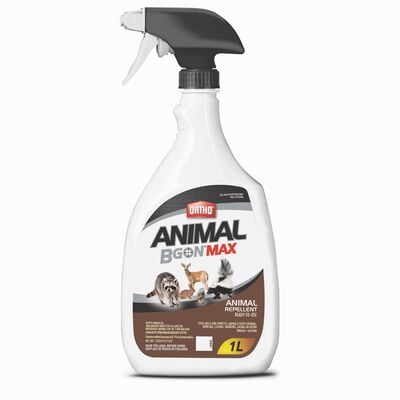
How To Prevent & Get Rid of Moles and Gophers
Gophers and moles may seem cute, but they are absolutely destructive to your lawn and garden. Learn how to control these critters.
Gophers and moles are destructive animals that dig underground tunnel systems, destroying lawns, gardens, and farms and taking out utility lines on their quest for food and shelter.
Although they are different animals, both gophers and moles are pests that can leave you with thousands of dollars in damage to your yard and home. Moles are rarely seen up close, but every year or two, gophers make an appearance on the local news for destroying the vegetation of an entire neighborhood.
In this article, we'll explain how to identify gophers and moles, lethal and nonlethal ways of controlling them, and how to keep them from coming back.
How to Identify Gophers and Moles
Gophers, or pocket gophers, are brownish-black rodents that tunnel their way through Manitoba, Saskatchewan, Alberta, and parts of British Columbia. They weigh around 200 g and are 15-20 cm long, plus an extra 2.5-5 cm for a tail. They are vegetarians that eat carrots, peas, potatoes, grass shrubs, and bulbs.
The pocket gopher got its name for the cheek pouches on each side of its face, which it uses to carry food or nesting materials. They travel underground to steer clear of predators like weasels, skunks, and snakes.
Gophers work alone, digging about 30 mounds a month year-round. If a homeowner has a gopher problem, they may or may not see the perpetrator. They're more likely to notice mounds of dirt and dying plants.
Moles are unusual-looking creatures with long, pointed snouts and tiny ears and eyes. They're 12 to 20 cm long and have gray or brown velvety fur and extended claws that look like extra-long fingernails. Each front paws has an extra digit (technically, a wrist bone) so they can move more dirt as they burrow.
Moles can eat their weight in food every day on a diet of worms, grubs, slugs, and insects. They tunnel near the surface and leave a path of ruined gardens and lawns behind them.
Six species of moles live in Canada:
- Shrew mole
- Coast mole
- Townsend's mole
- Eastern mole
- Hairy-tailed mole
- Star-nosed mole
Like gophers, moles also work alone, but are prolific, digging 150 feet of tunnels every day. If you have a mole problem on your property, you'll notice an increasing number of molehills, or little piles of dirt.
How to Get Rid of Gophers and Moles
Even though there is only one mole or gopher to control, that doesn't mean it's easy. Some people use carbon monoxide from a tailpipe to poison them. Others set off explosions in their tunnels. Both methods are expensive, dangerous, and not always effective. Here are a few suggestions for controlling gophers or moles.
Note: For safety reasons, consider hiring a professional and check local laws around relocating or poisoning wildlife before getting started.
Pest Control Ideas
- Live trap
- Peppermint oil, fish, pet waste, or fabric softener sheets
- Poison
- Repellent
How To Prevent Gophers and Moles From Coming Back
After the gopher or mole is gone, it's important to take a few steps to keep them from coming back. Here's are a few ideas that can help:
- Replace your plants with ones they don't like
- Change the way you garden
- Create a barrie
Repellent. Continuing to spray animal-repellent products will simply repel critters from entering places they shouldn't get into, such as your yard.
